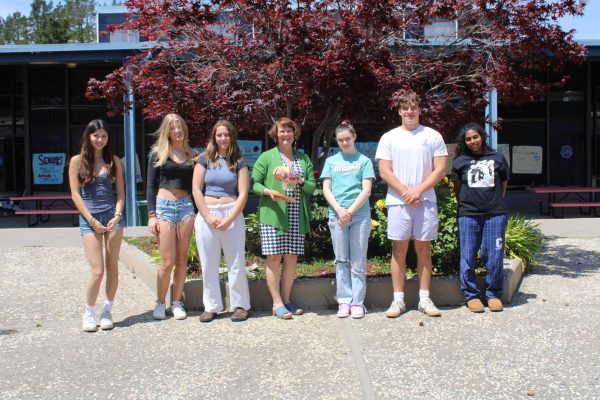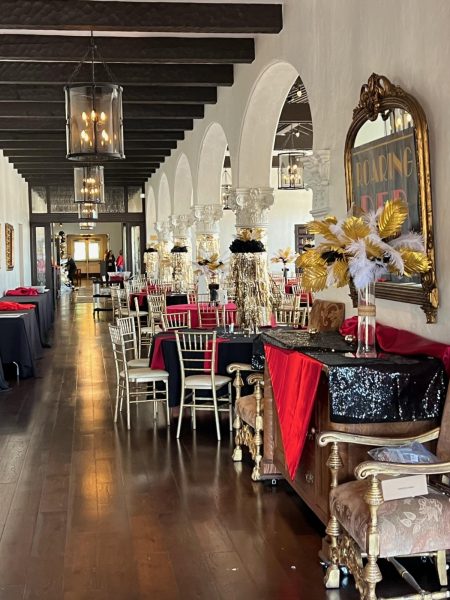STEM Club Leader Founds Collaborative Magazine
Life science clubs around campus have joined forces this year to create a new publication: Enzyme’s Digest. With each issue focusing on a different biological theme, club leaders and members collaborate to provide the STEM community at Campo with scientific news.
Junior Alexander Yee, co-founder of BEST (Biology Environmental STEM Team) Club, is the founder and current editor-in-chief of Enzyme’s Digest. The monthly publication seeks to promote knowledge and passion for the life sciences, aided by the collaboration of 4 other science clubs: Neuropsych Club, LGBTQ+ Students in STEM, Sort of Science (SOS), and Students in Research.
Yee said, “Back in August, my friend [junior] John Dong asked me if I was interested in helping him to start [BEST]. I really was interested in the idea because I really enjoyed biology, so I was looking for ways to deepen my knowledge of biological concepts.”
He added, “I started to think in October, ‘What if all the clubs collaborated on a newspaper, and we get each [club] to write an article.’… It would also be a great way for us to bring a different array of topics to talk about.” In past issues, the group has published articles about behavioral psychology, neurobiology, the evolutionary purposes of homosexuality, and more.
Senior Sheila Teker, secretary of SOS and an Enzyme’s Digest contributor, noted how the publication expands upon the information students are taught in STEM classes at Campo. “Usually in biology or chemistry classrooms, it might come up every now and then, but we don’t usually learn much about current technologies or current information. It was only in biotech that I really started learning about different, new advanced technologies. So it’s interesting having kids write about them,” said Teker.
1 of the unique things about Enzyme’s Digest is that its contributors have a vast array of interests related to the life sciences, creating a diverse pool of information centralized in 1 publication. “I think it’s great because all of our clubs are a little bit more specific. They focus on different aspects of the life sciences. So when it all comes together, we all get different perspectives. We all kind of look over the newspaper, so we can all see what the other people are writing like, ‘Oh, I did not know this was a thing.’ We get to learn a little bit about each other’s interests,” said Yee.
Senior Cathy Kenderski, president and founder of the Students in Research club, said that Yee reached out to her earlier this year asking if she was interested in being involved. “I think the last theme was evolutionary biology, and so every club published an article that had something to do with their club – I [wrote about] advances in the research field of evolutionary biology,” she said.
Because of its focus on the life sciences specifically, the newspaper may help to garner community interest in STEM topics. “It’s a very interactive process with the clubs and it’s very specific to that club. So I think it lets people have a look at another side of what every club’s theme could be,” said Kenderski.
Junior Ava Spalding, founder and president of the LGBTQ+ Students in STEM club and a Campolindo Neuropsychology club member, said, “I believe that Enzyme’s Digest positively impacts Campo and the STEM community because it provides a good outlet for people, no matter what their level of STEM knowledge is, [to] investigate and write about something that interests them. I would agree that Enzyme’s Digest helps garner support for STEM clubs because it provides a place where they can say that their club did something tangible and educational that benefited the school.”
Teker related her work with another publication on campus, Diversity Dispatch, to the community impact Enzyme’s Digest might have. She said, “I like how it informs a lot of kids and allows them to express their interests and kind of go into more of their knowledge outside of the classroom. It’s been interesting to have [a publication] that’s more STEM based because we’ve never really had anything like that before.”
While STEM students may comprise Enzyme’s Digest’s primary readership, Yee hopes that the newspaper may foster “an appreciation of just how complex the world of life sciences is, and how unique it can be.” Those interested in reading their recent February issue, focusing on human behavior, can access a digital copy. Enzyme’s Digest’s next issue is set to be published in early March.
Your donation will support the student journalists of Campolindo High School's The Claw. Your contribution will allow us to produce more issues and cover our annual website hosting costs.

Senior Jensen Rasmussen has been passionate about ballet since a young age, training and cultivating her love of dance throughout her high school career....



